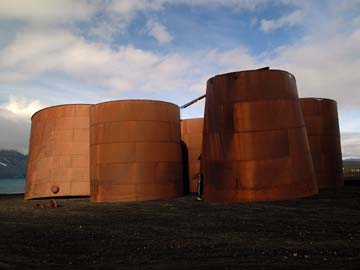

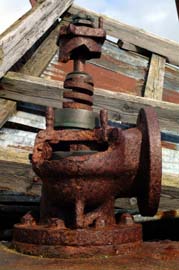
Deception Island is both the site of an old whaling station and an intermittently active volcano. The volcano erupted in 1967, heavily damaging the abandoned whaling station.
The wreckage provided fine opportunities for photographs.
The storage facilities for whale oil included tanks and valves, now in ruins after the eruption.
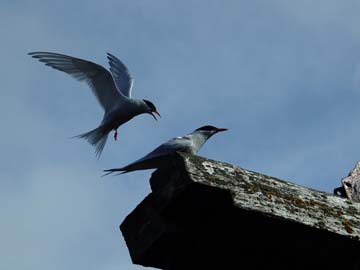
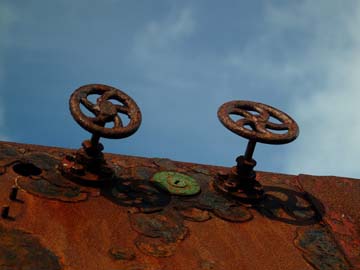

Antarctic Petrels roosted on the wooden beams above the ruins of the station.
The red iron rust and green corroded brass contrasted nicely with the blue sky.
That's Karen strolling the beach in her stylish Antarctic summer outfit.
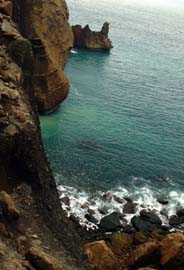
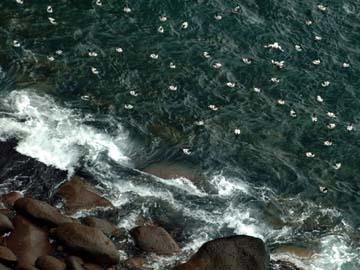
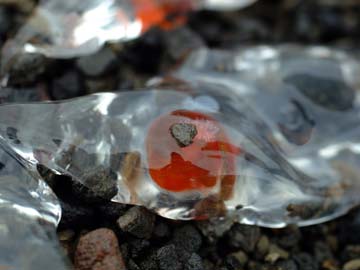
Whaler's Bay, site of the station, is inside the volcano'scaldera. We climbed to a low point on the rim, called Neptune's Wiindow, and looked out on the open sea.
The tiny dots on the ocean are hundreds of petrels which roost among the cliffs.
We found a number of these Salps washed ashore on the beach in Whaler's Bay.
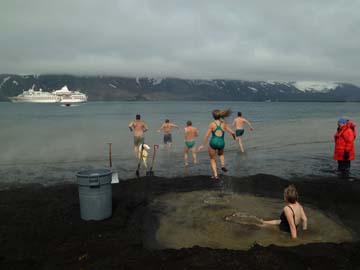
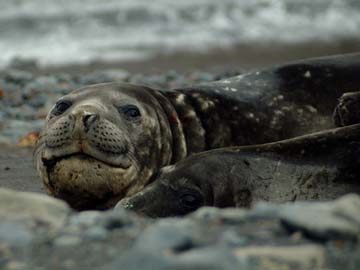
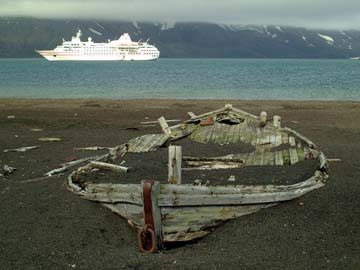
The residual vulcanism generates enough heat to warm a pool dug on the beach. We'd run into the bay's icy waters and swim until we went numb, then warm up in the pool. Dave's third from the left, the sensible one of us took the picture.
A pair of Weddell seals considered us wimps.
A study in contrasts.
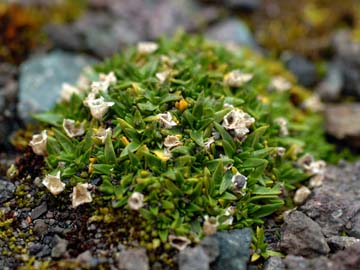
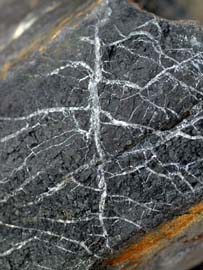
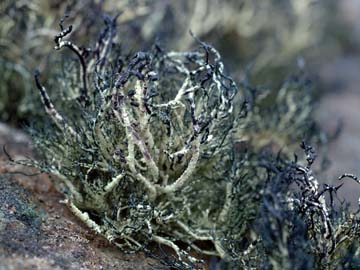
Our final landing was on Livingstone Island. Above is a sample of the Antarctic Pearlwort, one of two vascular plant species found in Antarctica (the other's Antarctic Hair Grass).
Livingstone Island was one of the first sites in Antarctica at which fossils were found.
This tough lichen manages to thrive on rock surfaces exposed to severe wind and cold.